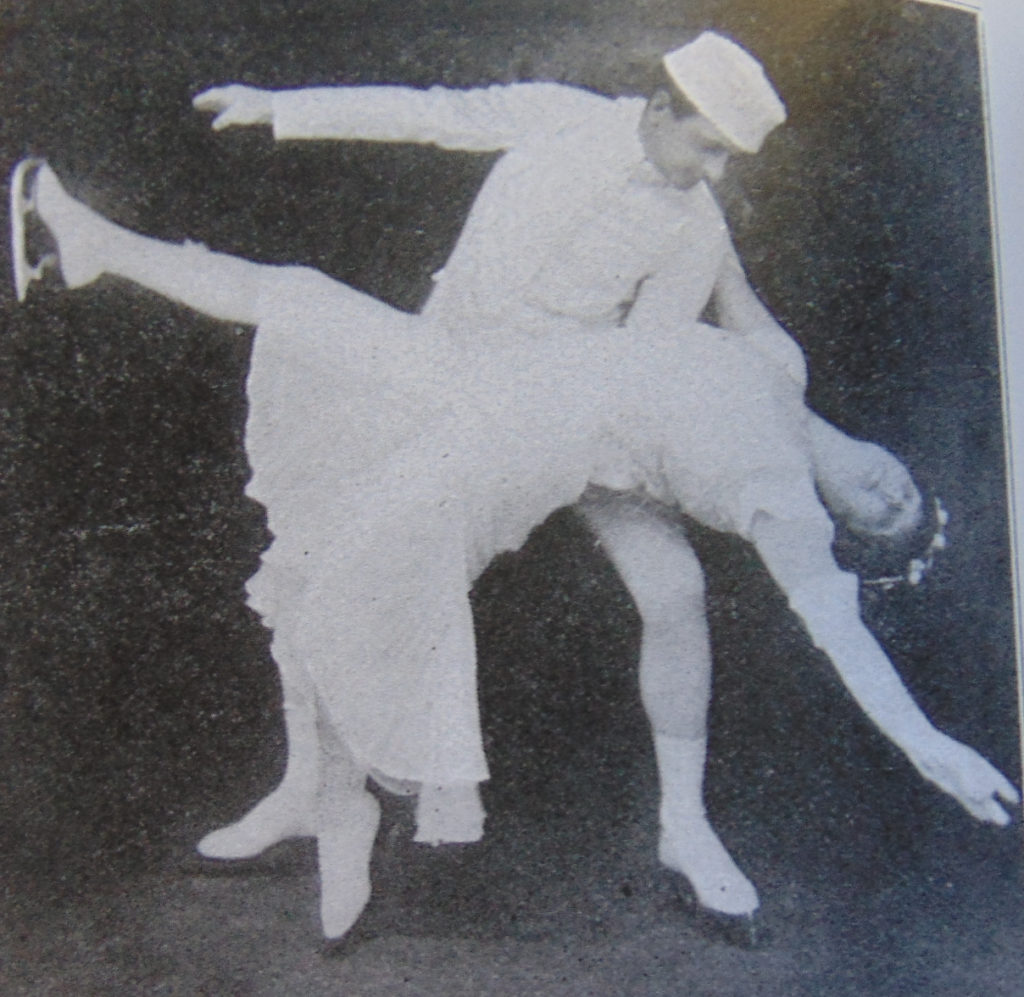It’s often said that Sonja Henie was the first to wear white boots for figure skating. She may have been responsible for setting the trend because of her popularity, but she wasn’t the first to do it.
Julian Fitzgerald’s Skaters History on Ice and Roller Skating—published in 1916, when Henie was just four years old—includes many pictures of skaters. Some of them are wearing white boots. Among the women are Ray Collins (p. 74), Isabel Butler (p. 75), June Rodger (p. 77), the El Ray sisters (p. 81), Grace Allen (p. 84), Adelaide D’Vorak (“America’s foremost skater,” p. 184), and five women of Baptie & Lamb, Co., who surround a man in black skates (p. 66).
Today, white boots are the norm for women, but men are rarely seen in them. That appears not to have been the case in Fitzgerald’s day. Judging from his pictures, it was not unusual for male and female skating partners to wear matching skates, whether white or black. Cathleen Pope & George Kirner (p. 63), Grace Helaine & Edward Bassett (p. 68), Ellen & Orrin Markhus (p. 70). Helen Carlos & Howard Fielding (roller skaters, p. 131), and the Rexos (roller skaters, p. 132) are all shown in matching white skates.


Men without partners are also shown in white figure skates: Roy H. Fink (p. 69) and W. T. Carey (p. 87). Here’s Roy Fink in his white skates.
Skaters seem to have picked their skate colors as part of their costumes. The skaters in white skates are generally shown in light-colored costumes. It’s hard to say whether they were wearing all white because the pictures are not in color. But there’s another reason for white skates, one that goes back even further. In 1897, Caroline Creyke noted that
Women who are at all awkward in their movements should be careful not to wear white gloves, or white lace ruffles at the end of long dark sleeves, as every gesture is accentuated by the spots of white waving against the dark background of people. White boots, on the contrary, make the feet look smaller than black ones, as their outline is lost on the white of the surface ice.
Caroline Creyke, Skating on Artificial Ice. The Nineteenth Century: A Monthly Review, 41 (1897), p. 483.
There you have it. Sonja Henie couldn’t have come up with the idea of wearing white skates because it was around fifteen years before she was born.
References
Caroline Creyke, 1897. Skating on Artificial Ice. The Nineteenth Century: A Monthly Review 41: 474–486.
Julian T. Fitzgerald, 1916. Skaters History on Ice and Roller Skating. Chicago: Julian T. Fitzgerald.
